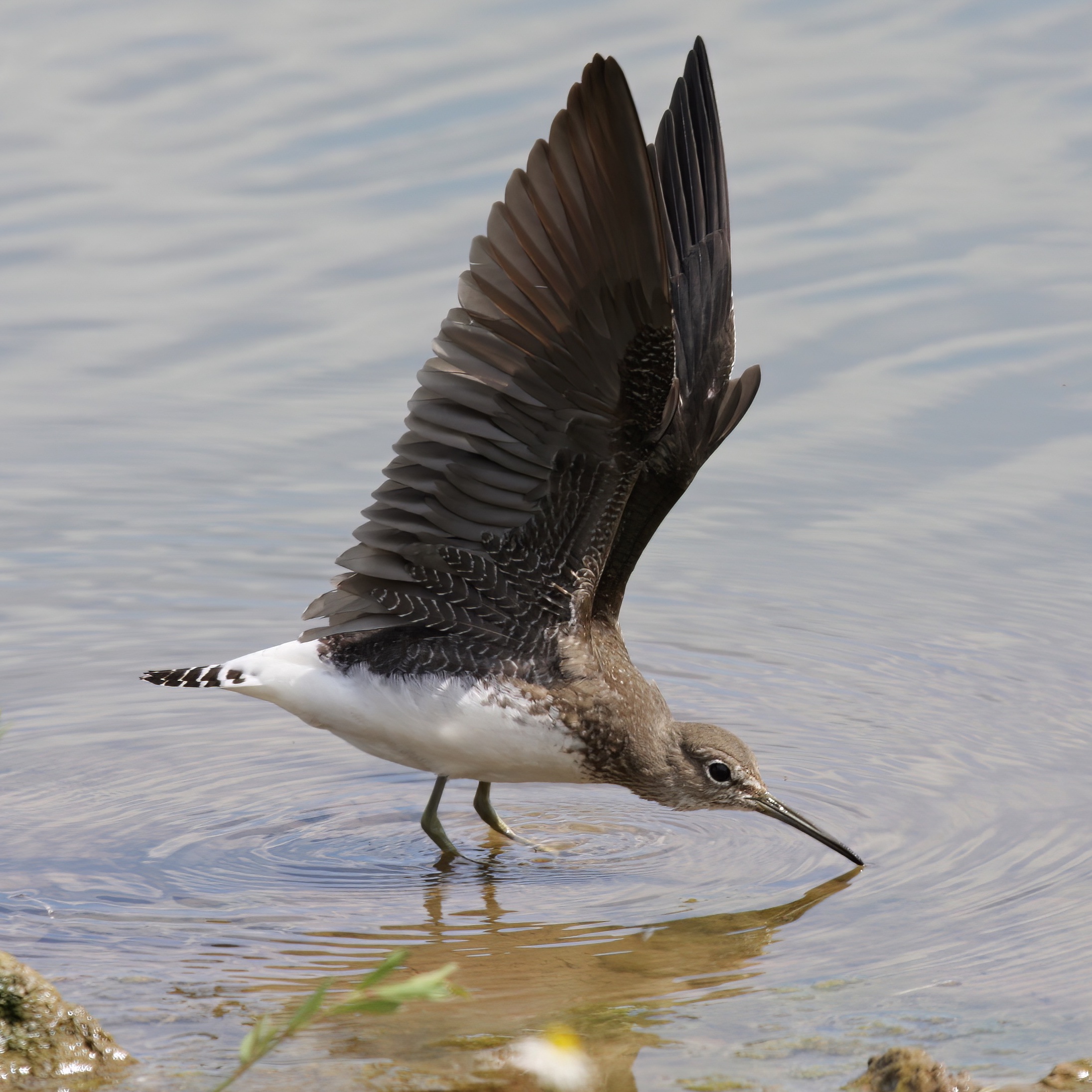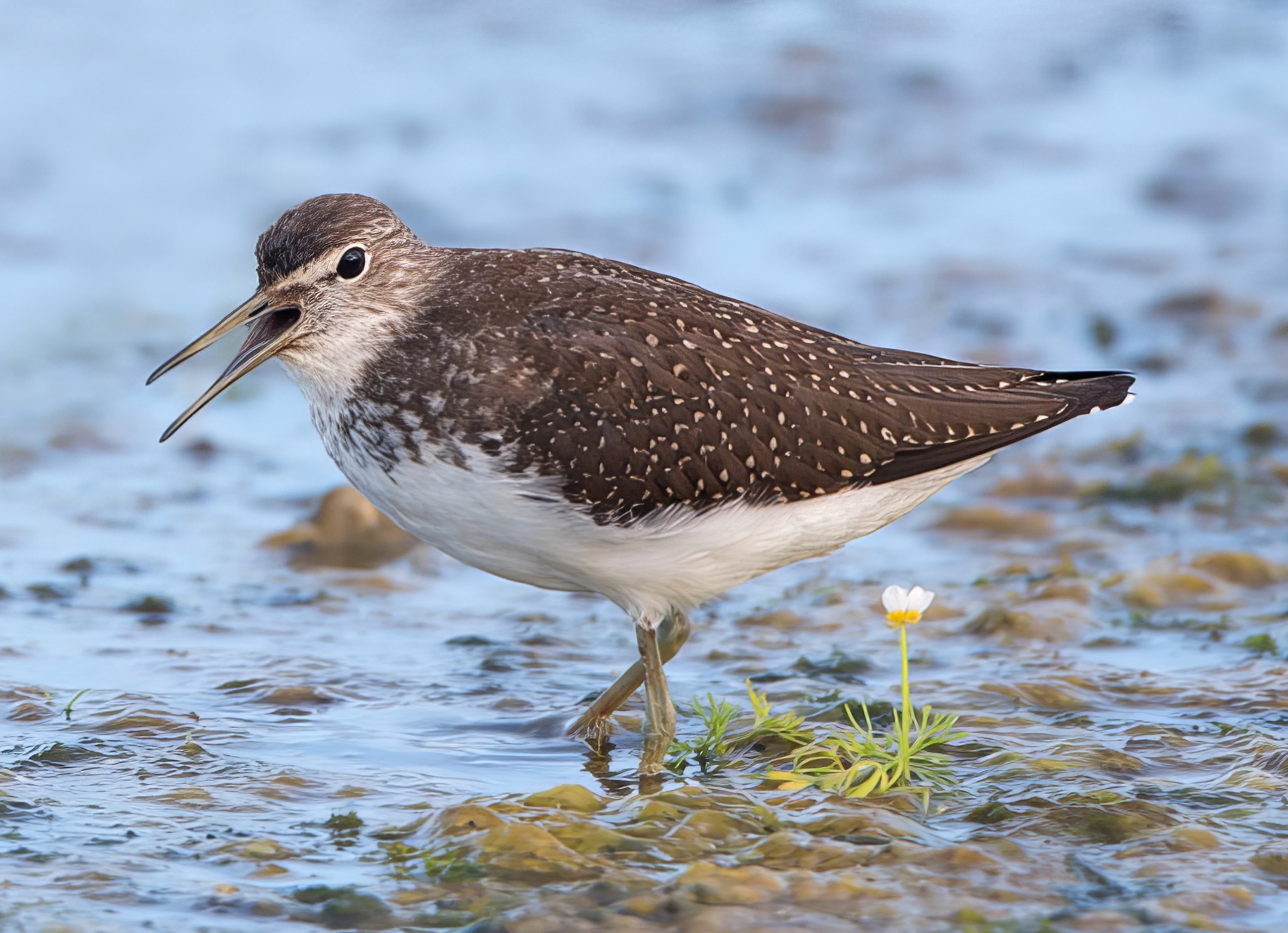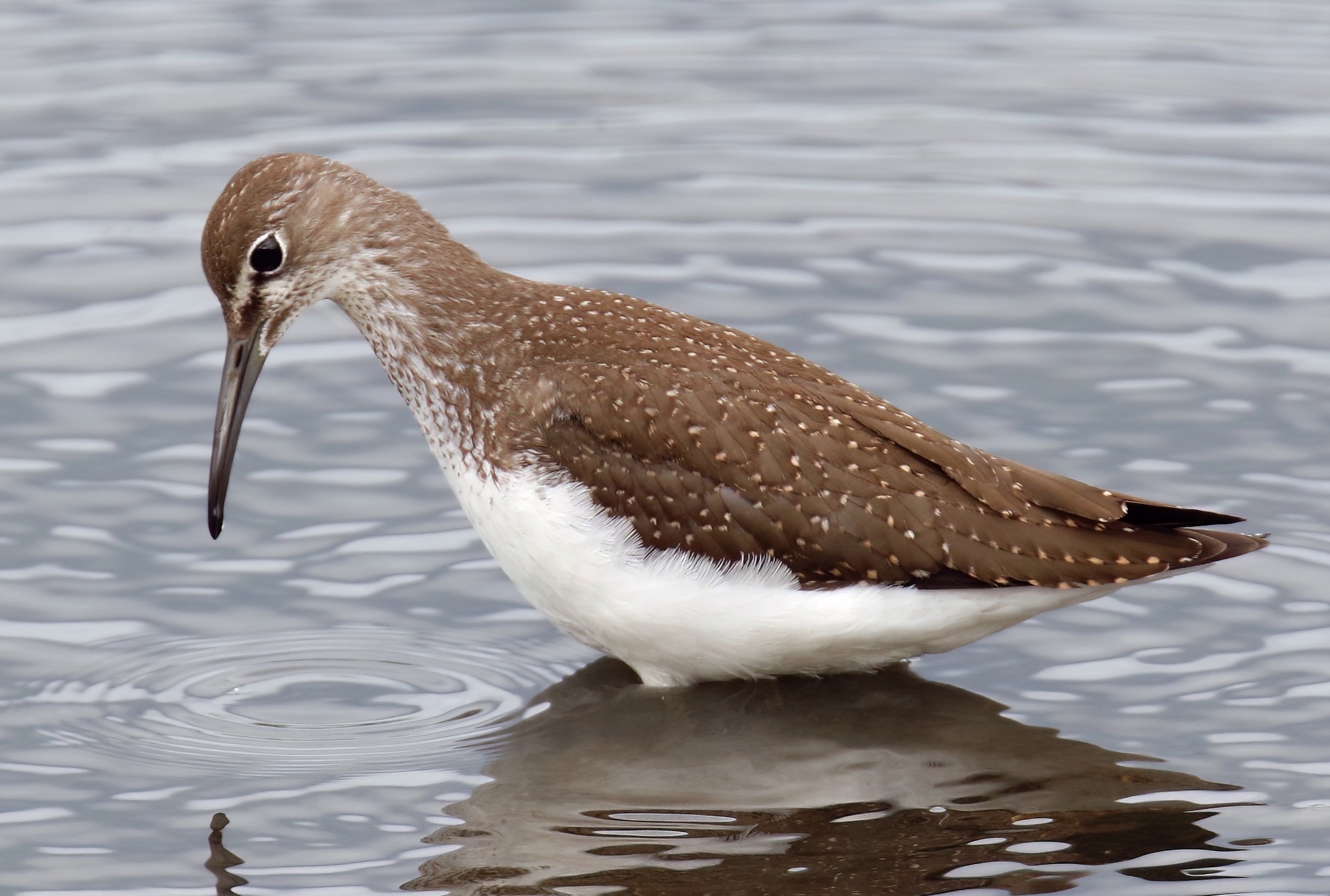Green Sandpiper Tringa ochropus
Fairly common autumn passage migrant, scarce in spring and also a regular winter visitor.



Green Sandpipers: left, Freiston Shore August 11th 2009 (Neil Smith); centre, Frampton Marsh August 11th 2013 (Russ Telfer);
right, August 2018, Huttoft Pit (Michael Tarrant).
Green Sandpiper winters widely at low density across Lincolnshire especially in the Marsh, Fens and Trent Valley and estimating the population is all but impossible without detailed survey work. The BTO Atlas 2007-11 found it was fairly widespread, wintering in 47 10km squares. This wintering population is probably of the order of 100-200 birds making it difficult to detect spring migration. In the autumn the position is much clearer cut. Peak passage usually takes place in July-August and the LBR reports for the five years to 2018 show a range in peak monthly counts across the county from 62 in July 2018 to 135 in August 2015. Remarkably for such a small site, Manby Wetlands has had the peak site count in three out of five years with the maximum being 25 in August 2015; Frampton Marsh held 26 in July 2014.
Birds ringed in the county in autumn have been recovered in Denmark, Finland, Russia and Sweden. An adult ringed in The Netherlands in July 2006 was recovered in the county in November 2008, hit by a car. The longevity record for UK-ringed birds from the BTO online ringing data is just over 11 years.
(Account as per new Birds of Lincolnshire (2021), included September 2022)
